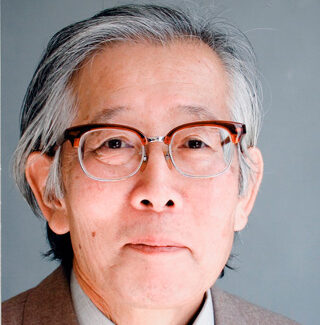Thomas Washington Talley
A leading chemistry educator and musician who proposed a new periodic table of elements to explain the unusual structures of boron hydrides.

Thomas W. Talley (1868–1952) highlighted deep connections between education, chemistry, and music. He mentored generations of undergraduate chemistry students at Fisk University, including St. Elmo Brady, who established a lecture series and graduate programs in his honor.
A Liberal Education
Thomas Talley was born on October 9, 1868, to parents Charles Washington and Lucinda (Williams) Washington in Bedford County, Tennessee. Talley earned his BA degree from Fisk University in 1890 and his MA there two years later. In 1896, Talley was awarded a Doctor of Science (DSc) in chemistry from Central Tennessee College, later known as Walden University. Both schools are listed among the Historically Black Colleges and Universities (HBCUs), which were founded to serve Black students in the Reconstruction era.
In the early 1900s, educator Booker T. Washington and scholar W.E.B. DuBois, two leading Black thinkers, publicly debated very different philosophies regarding the education of African Americans. Washington strongly advocated for a vocational education that would prepare students at HBCUs to move on to careers in skilled trades. DuBois, on the other hand, emphasized the importance of a well-rounded liberal arts education—one including the classics, arts, and humanities—as a way of cultivating Black leaders.
Fisk University provided undergraduates with a curriculum aligned with DuBois’s vision, requiring students to enroll in science and mathematics courses as part of their education. Talley melded this with what he called African American “tradition.” He was deeply engaged with music, folklore, and science over the course of his studies and later career at Fisk, and he highlighted connections between his scientific and humanistic interests in his writings. A member of the celebrated Fisk Jubilee Singers during his student years, he went on to advocate for the study of Black oral traditions on the grounds that in “the elemental origin of traditions probably lies the answer as to the beginnings of all things religious, literary, and scientific.”
LEARN MORE
In Negro Folk Rhymes (1922), Tally used chemistry as a framework to organize ballads and rhymes in a systemic classification. He started by highlighting connections between oral tradition and chemistry. “All Nature is one,” he wrote. “Though we arbitrarily divide Nature’s objects for study, they are indissolubly bound together.” By comparing oral traditions to the chemical composition of blue sapphires, he showed that it was necessary to analyze different components of specimens to arrive at a true classification. Elsewhere he wrote, “In the Periodic System of Elements there are two periods; a short period and a long period, but both periods embrace, in common, elements belonging to the same family.” Chemistry, in this case, helped him compare the traditions collected in Negro Folk Rhymes according to both form and meaning, as shown in the tables below.
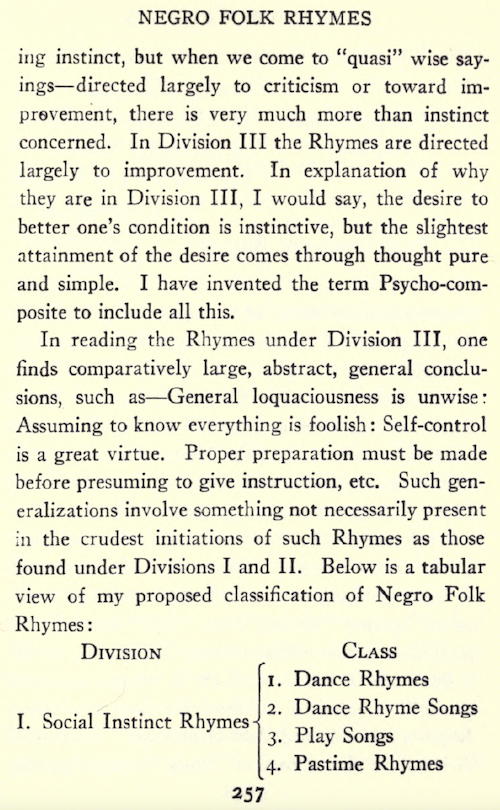
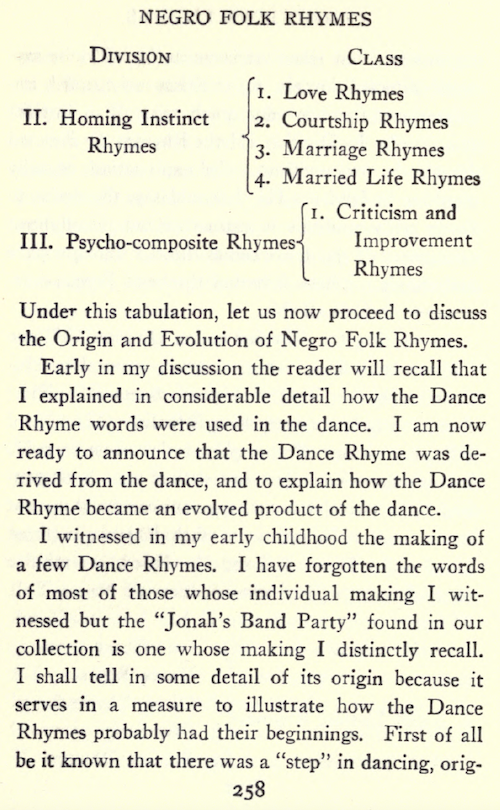
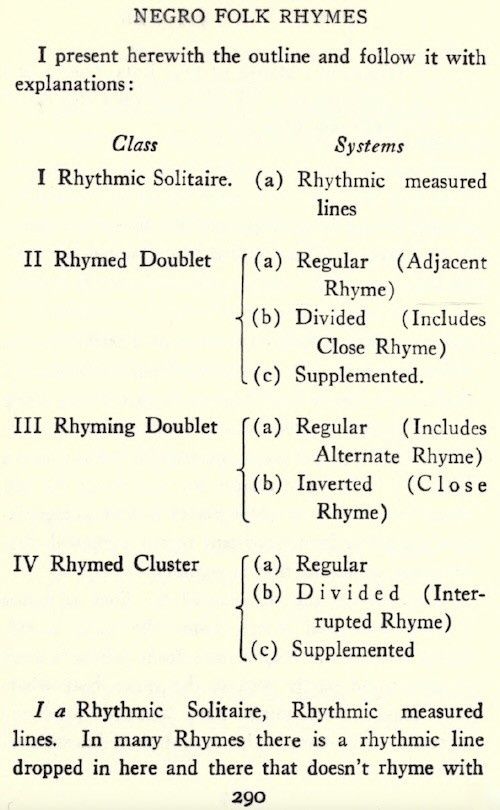
Pages from Negro Folk Rhymes: Wise and Otherwise, with a Study by Thomas W. Talley of Fisk Univeristy (1922).
Talley was a life-long learner who continued his chemistry education long after earning his doctorate. In the summer of 1914, as World War I broke out, Talley began post-graduate study at Harvard University in physical chemistry. He would return two years later for a course in organic chemistry. In 1931, at the age of 62, Thomas Washington Talley completed a second master’s degree in chemistry at the University of Chicago.
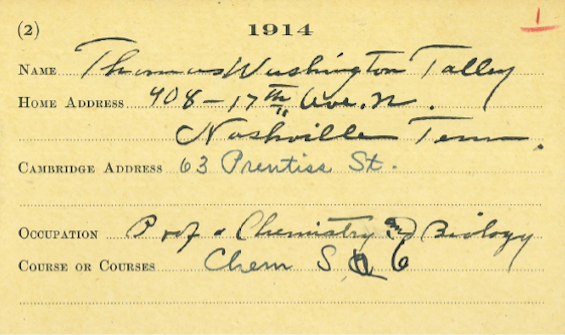
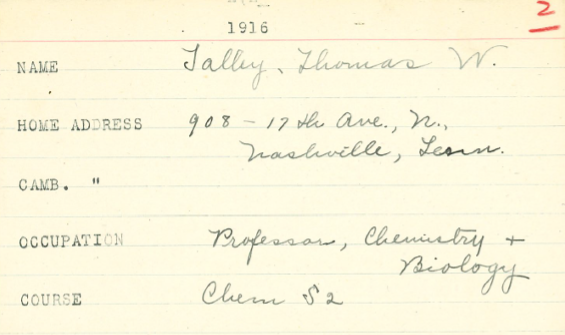
Thomas W. Talley’s Harvard University registration cards from 1914 (left) and 1916 (right).
A Dedicated Mentor
Between 1896 and 1903, Talley taught at several HBCUs, including Alcorn College, Florida A&M College, and the Tuskegee Institute. It was during his time at Florida A&M in Tallahassee that Talley met his future wife, Ellen Eunice Roberts. The couple had three daughters: two of them, Thomasina and Sonoma Carolyn, followed in their father’s footsteps by pursuing careers in music. Thomasina went on to earn a doctorate in music education from Columbia University in 1942.
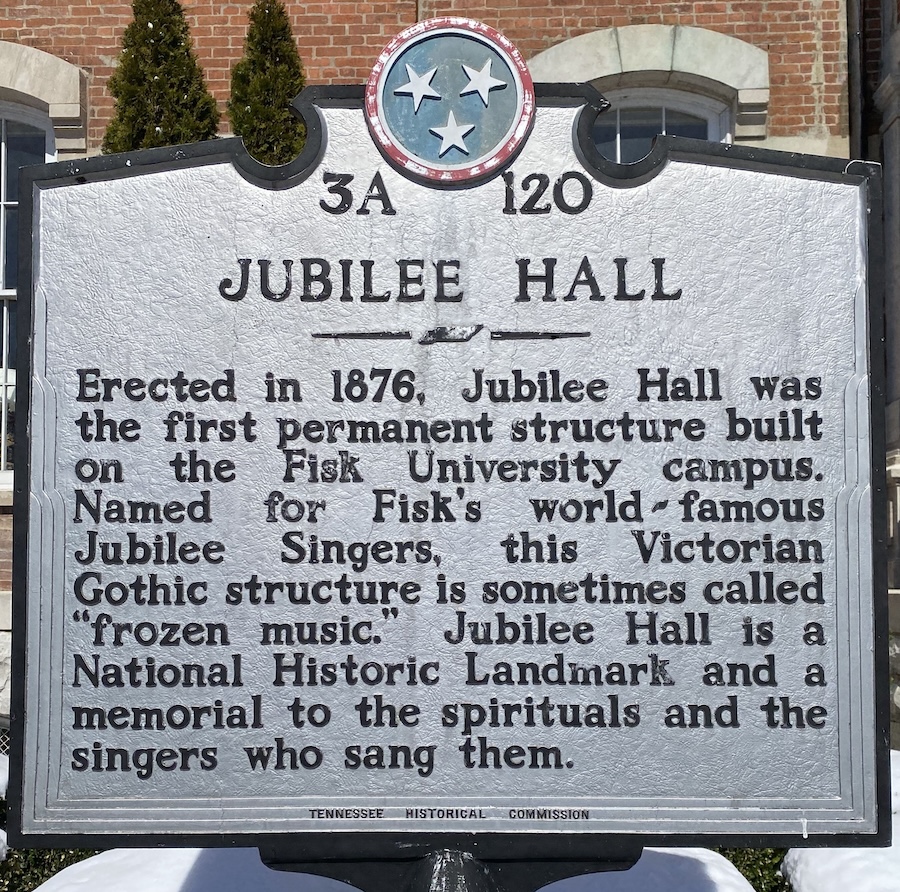
A relationship between music and chemistry education would have made sense to Talley. The Fisk Jubilee Singers, with whom he had sung bass, played a central role in the educational mission of the school. Not only did their fundraising concerts save Fisk from financial ruin in the 1870s, proceeds from their tours were used to commission Jubilee Hall, the first permanent structure on campus, and Chase Hall, which became home to the science department. Talley’s background in music was woven throughout all of his work at Fisk.
Talley taught biology and chemistry at Fisk from 1903 to 1938. He served as chair of the chemistry department for 25 years. Shortly after his return, he began mentoring St. Elmo Brady, who became the first African American to earn a PhD in chemistry in the United States. Brady’s career mirrored Talley’s in significant ways: he traveled north to Illinois for his graduate education (he earned his doctorate from the University of Illinois, Urbana Champaign in 1916), he taught at several HBCUs before settling down at Fisk in 1927, and he succeeded Talley as chemistry department chair.
Brady later described the impact Talley had on his life stating, “I do not remember Thomas Talley for the chemistry he taught me but for the encouragement and inspiration he gave me to go on.” It is quite possible that Brady returned the favor and encouraged Talley to pursue his own graduate work at the University of Chicago in the early 1930s.
Boron Hydride Chemistry
Talley wrote his thesis at Chicago on “Theories Relating to the Constitution of the Boron Hydrides” under the direction of inorganic chemist Warren C. Johnson. The boron hydrides are compounds that consist of boron (B) and hydrogen (H) atoms. Known as boranes today, these compounds have important applications in medicine, catalysis, and batteries.
LEARN MORE
German chemist Alfred Stock was the leading authority on the boron hydrides in Talley’s day. He proposed that compounds such as diborane (B2H6) were similar to the carbon analogue ethane (C2H6). This approach did not work well because boron only has three valence electrons available for bonding compared to carbon, which has four. The chemical structure of diborane was finally solved by Hedberg and Schomaker in 1951, who showed that the compound contained two B-H-B bridges and four terminal B-H bonds. Eberhardt, Crawford, and Lipscomb (1954) then presented the concept of the three-centered, two-electron bonds explaining the existence of B-H-B bridges found in boron hydrides. Lipscomb and Hoffman published a groundbreaking computational study on boron hydride valence structure in 1962, and Lipscomb was awarded the Nobel Prize in Chemistry for this work.
During Talley’s lifetime, the chemical structure of these compounds was a mystery. Chemists would often utilize hydrocarbon bonding models to explain the unique chemical structures of boron hydrides. Talley’s thesis was a critical analysis of the bonding models that had been proposed to account for boron hydride compounds in the early 1900s. His goal was to align these formulae with accepted theories of valence, or combining power. Talley concluded that although “…chemists of three continents have vigorously attacked the problem, it remains…unsolved.”
Talley was drawn to this mystery because it promised to broaden chemical understanding of the way molecules form covalent bonds in general. He decided to take a novel approach to explaining the “peculiar compositions” of boron hydrides and proposed a new periodic table of elements and a new theory of valence that he termed “foci valence.” This willingness to revise an accepted system of classification was similar to his earlier impulse to overhaul the classification of song types based on the circulation of call-and-response “elements” in oral traditions.
A New Periodic Table
Talley’s table had some similarities to the representations that were accepted at the time because he arranged the elements by increasing atomic weights. Talley proposed:
The borane hydrides, in other words, led Talley to a new theory of atomic structure in addition to a new system of classification. “This table results from my newer conception of the structure of the atom,” he wrote. “I hope [it will] make clear the very few newer thoughts pertaining to atomic structure which we are compelled to have in order to understand and explain the structure of the boron hydrides.” These “very few newer thoughts” concerned the outer electronic shells of atoms, their structure, and their ability to “hold” other molecules. Though he never published the final version of his theory, he was working on a book titled A New Systemization of Chemistry at the time of his death in 1952.
Talley seamlessly blended interests in nature and culture in a systematic philosophy rooted in tradition. He was a dedicated mentor who opened doors for subsequent generations to walk through. Today, the Talley-Brady Chemistry Building at Fisk University preserves this legacy in brick and mortar.
Glossary of Terms
Doctor of Science (DSc)
A professional doctorate distinct from the Doctor of Philosophy (PhD) degree. It is generally seen as more practical than the PhD, oriented towards applied research. In some countries it is more prestigious than the PhD.
Back to top
Reconstruction era
A period in U.S. history (1865–1877) after the American Civil War when attempts were made to heal some of the legal, political, social, and economic wounds of slavery and to reunify the country.
Back to top
Tradition
This was a technical term for Talley. He defined it as “whatever has been handed down by word or mouth and was at one time, conceived to be either a whole or a part truth.” According to Talley, myths and legends should be included in the category, but not stories told purely for entertainment.
Back to top
Valence
Dating back to 1852, the concept of valence defined the number of bonds an atom can form.
Back to top
Further Reading
Brewer, W. M. (1953). Thomas Washington Talley. The Journal of Negro History, 38(2), 251–253.
Eberhardt, W.H., Crawford, B. and Lipscomb, W.N., 1954. The valence structure of the boron hydrides. The Journal of Chemical Physics, 22(6): 989-1001.
Hoffman, R. and Lipscomb, W.N., 1962. Theory of Polyhedral Molecules. I. Physical Factorizations of the Secular Equation. The Journal of Chemical Physics, 36: 2179.
Mickens, R. E. (2018). “The Life and Work of Elmer Samuel Imes.” Physics Today, 71(10), 28-35.
Talley, T. W. (1922). Negro Folk Rhymes: Wise and Otherwise (No. 2). Macmillan.
Vieira, H., & Morais, C. (2022). “Musical Analogies to Teach Middle School Students Topics of the Quantum Model of the Atom.” Journal of Chemical Education, 99(8), 2972-2980.
You might also like

DISTILLATIONS MAGAZINE
A Seat at the Table
A recent collection showcases the famous and not-so-famous women who have left their mark on the periodic table.
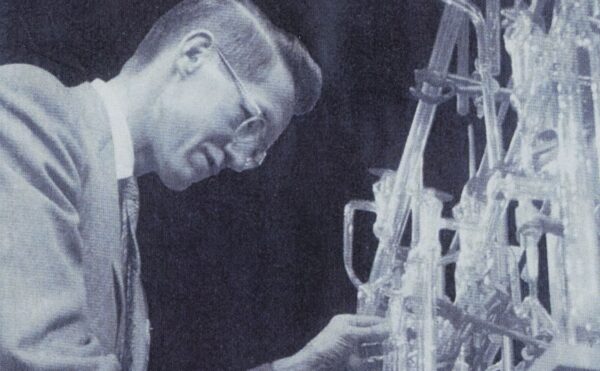
SCIENTIFIC BIOGRAPHIES
Robert W. Parry
A champion of scientific literacy, Parry was an inorganic chemist who devoted himself to education.
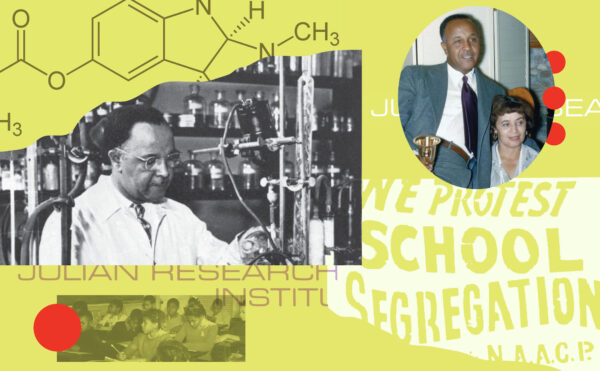
DISTILLATIONS MAGAZINE
Percy Julian and the False Promise of Exceptionalism
Reflecting on the trailblazing chemist’s fight for dignity and the myths we tell about our scientific heroes.

